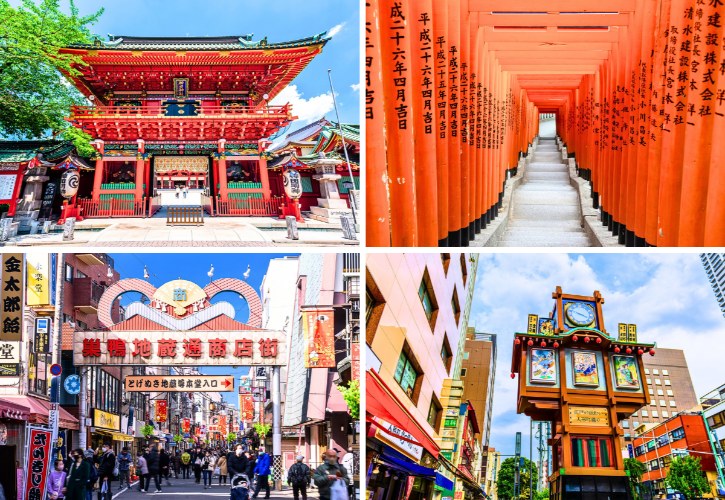
Want to discover amazing spots in Tokyo most tourists miss? Let me share 10 wonderful places that are truly worth exploring!
You’ll find quiet shrines, cozy shopping streets, and tasty local treats.
These spots offer peaceful atmospheres, authentic experiences, and delicious snacks.
I hope this guide helps you explore Tokyo like a local and uncover a different side of the city! 😊
1. Kanda Myojin Shrine
a. Overview

- What It Is: Kanda Myojin is an old and famous Shinto shrine in Tokyo. People visit to ask for luck, wealth, and protection.
- History: Founded in 730, moved to the current spot in 1616, and rebuilt several times due to earthquakes and wars. Known for the lively Kanda Matsuri festival held every two years in May.
- Why Visit: It blends traditional shrine culture with modern pop culture. Located near Akihabara, it’s popular for unique charms and wishing for good luck.
- Atmosphere: Calm and peaceful, yet welcoming to all. You’ll see both traditional worshippers and modern anime fans here.
b. What to Do There
Main Features
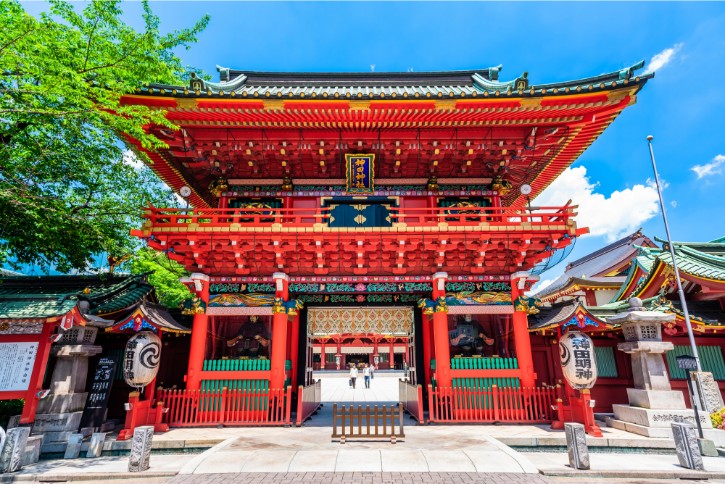
- Zuishin-mon Gate: A colorful and detailed gate at the main entrance. It’s perfect for taking photos, especially at night.
- Main Hall (Honden): The main shrine building where you can pray and offer coins. It’s easy for anyone to join in or quietly observe.
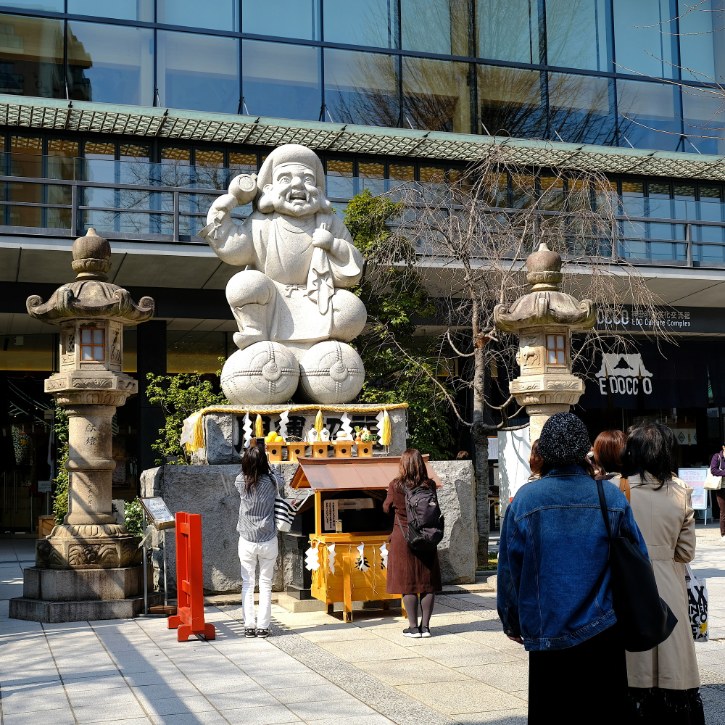
- Daikokuten Statue: A large statue of the god of wealth. Visitors often take photos here and offer brief prayers for good luck.
- Shishiyama (Lion Hill): A small rock feature with a lion statue and miniature waterfall. It’s a quiet spot good for a quick rest.
Activities and Facilities
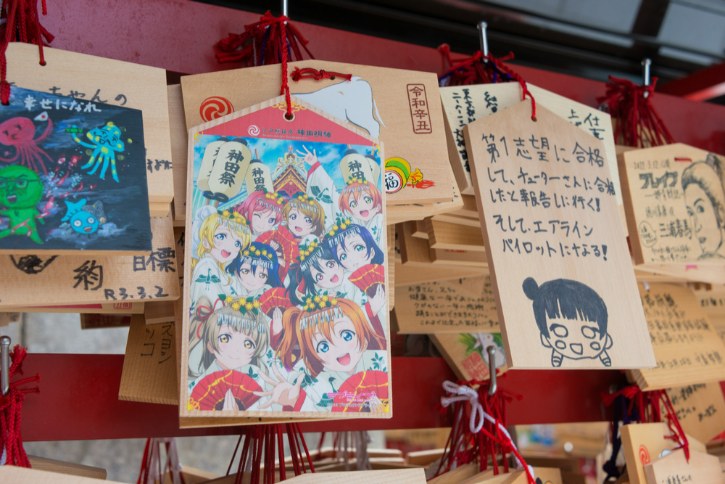
- Ema (Votive Tablets): Write your wishes on wooden tablets and hang them at the shrine. Many tablets have fun anime designs.
- Protective Omamori (Amulets): Special charms available for health, love, and success.
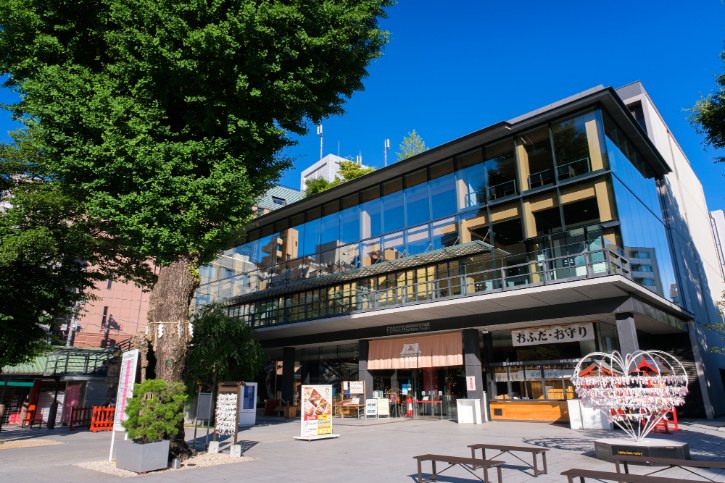
- EDOCCO Cultural Complex:
- Souvenir Shopping: A store selling official shrine items, charms, anime-themed goods and snacks.
- Café Masu Masu: A cozy café serving creative desserts like parfaits and ginger-based drinks, perfect for a relaxing stop.
c. How to Get There
- By JR Train: Take the JR Chuo Line or Chuo-Sobu Line (Local) to Ochanomizu Station (Hijiri-bashi Exit). The shrine is about a 7-minute walk from there.
- By Tokyo Metro:
- Marunouchi Line: Get off at Ochanomizu Station (Exit 1). Walk about 7-minute to reach the shrine.
- Ginza Line: Get off at Suehirocho Station (Exit 3). It’s around a 5-minute walk to the shrine.
2. Yanaka Ginza
a. Overview

- What It Is: Yanaka Ginza is a charming, traditional shopping street in Tokyo, known for its old-time feel, friendly shops, and tasty street food.
- History: This area survived past earthquakes and wars, keeping many original buildings intact.
- Why Visit: You can experience authentic local life, enjoy delicious street food, shop for unique souvenirs, and capture nostalgic photos.
- Atmosphere: Relaxed and friendly, with a retro vibe. Known as “Cat Town”, you’ll often spot cats and cat-themed goods.
b. What to Do There
Popular Spots

- Sunset Stairs (Yuyake Dandan): Famous stairs at the entrance of the street, perfect for photos, especially during sunset.
- Shopping & Souvenirs: Explore small shops selling handmade pottery, tea, traditional snacks, and cat-themed gifts.
Food to Try
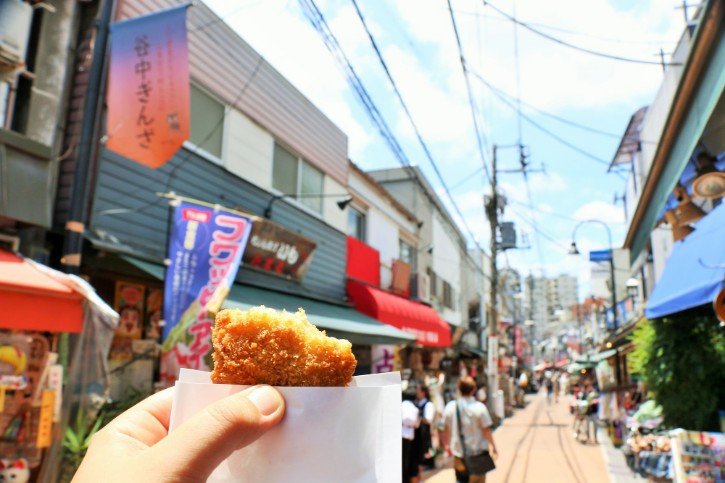
- Niku no Suzuki: Another well-known shop with tasty beef cutlets (“Genki Menchi”) and eggplant stuffed with meat (“Nasu Menchi”).
- Niku no Sato: Popular butcher shop selling delicious fried meat cutlets (“Yanaka Menchi”) and crispy potato croquettes.
- Yanaka Shippoya: Enjoy cute “cat tail” donuts in various flavors like chocolate and caramel.
- Yanaka Senbei: Traditional shop serving freshly toasted rice crackers made using classic recipes.
- Himitsudo: Retro café famous for fluffy shaved ice desserts with seasonal homemade syrups.
- Guru Guru Gelato: Popular gelato shop serving flavors like matcha (green tea) and black sesame.
c. How to Get There
- By JR Train: Take the JR Yamanote Line to Nippori Station (West Exit). Yanaka Ginza is about a 5-minute walk from there.
- By Tokyo Metro: Take the Chiyoda Line to Sendagi Station (Exit 2). Yanaka Ginza is around a 5-minute walk from the station.
3. Sugamo Jizodori Shopping Street
a. Overview

- What It Is: A popular shopping street in Tokyo known as “Grandma’s Harajuku”, mainly visited by seniors but welcoming everyone.
- History: Started during the Edo period and grew around Koganji Temple, becoming a lively shopping area over time.
- Why Visit: Offers a relaxed, nostalgic atmosphere and traditional products. Ideal for experiencing local life away from typical tourist spots.
- Atmosphere: Friendly, calm, and easy-going. Extra lively on the 4th, 14th, and 24th of each month due to temple festivals and street stalls.
b. What to Do There
Explore & Shop

- Koganji Temple: Visit this temple known for its healing rituals. Join locals in washing or wiping the Buddha statue to pray for good health.
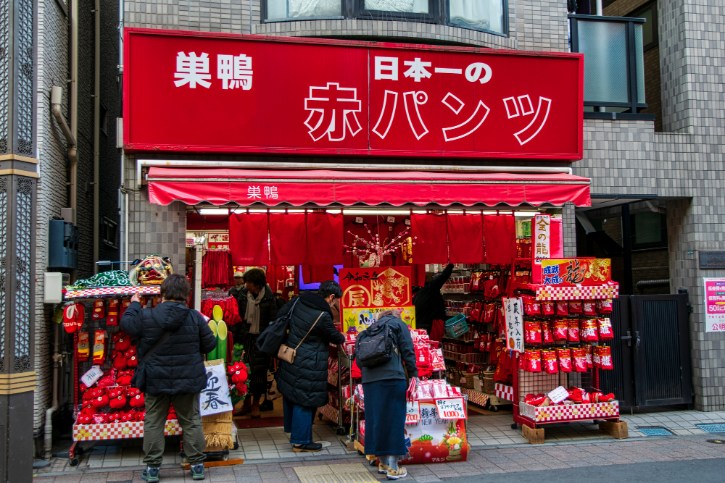
- Maruji Shop: Shop for famous lucky red underwear, clothes, scarves, and gloves believed to bring good luck and good health.
Enjoy Local Snacks
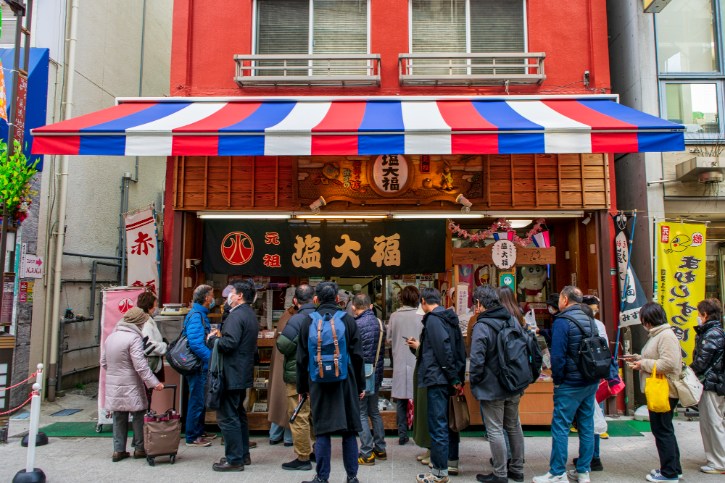
- Shio Daifuku at Mizuno: Soft, salty-sweet mochi filled with red bean paste, a popular snack among locals.
- Nuresenbei at Raijindo: Try soft and chewy rice crackers dipped in sweet soy sauce, different from typical crunchy crackers.
- Ichigo Daifuku at Eitaro: Enjoy fresh strawberries wrapped in sweet red bean paste and soft mochi.

- Isoage at Isoage Maruten: Delicious fried fish cakes served hot on skewers. Popular flavors include octopus with ginger or shrimp with mayonnaise.
- Honeycomb Ice Cream at Sugi Honey Shop: Try creamy vanilla soft serve topped with real honeycomb and honey drizzle.
- Anpan at Kifukudo: Try soft buns filled with sweet red bean paste from a bakery open for over 100 years. Choose between smooth or chunky fillings.
c. How to Get There
- By JR Train: Take the JR Yamanote Line to Sugamo Station (Main Exit). Sugamo Jizodori is about a 6-minute walk from there.
- By Subway: Take the Toei Mita Line to Sugamo Station (Exit A3). Sugamo Jizodori is around a 2-minute walk from the station.
4. Ningyocho (Doll Town)
a. Overview
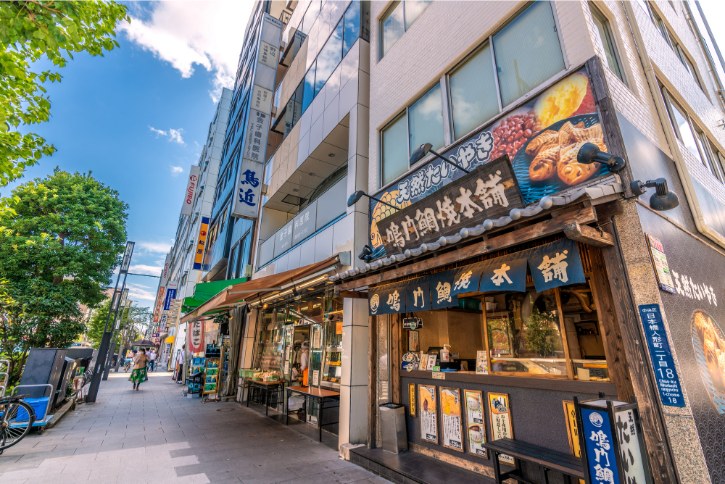
- What It Is: Ningyocho, also called “Doll Town”, is a historic neighborhood in Tokyo. It’s known for traditional crafts, culture, and delicious snacks.
- History: Ningyocho started during the Edo period, famous for puppet theaters and doll-making workshops. Many historic buildings remain, preserving its traditional charm.
- Why Visit: Visit for a quieter, authentic Tokyo experience. It’s perfect for enjoying old-fashioned shops, local snacks, and experiencing daily life away from crowds.
- Atmosphere: The neighborhood feels friendly and nostalgic. Walking around gives you a sense of old Tokyo life, making it pleasant and comfortable to explore.
b. What to Do There
Attractions
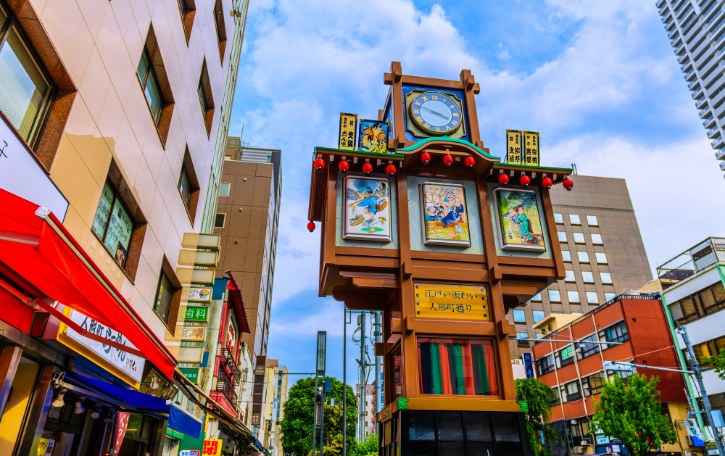
- Mechanical Clock Towers: Watch hourly puppet shows at two clock towers from 11 AM–7 PM. Shows feature miniature dolls depicting old Edo life.
- Suitengu Shrine: A peaceful shrine known for helping people pray for safe childbirth. It’s a nice place to experience local traditions.
- Amazake Yokocho: Main shopping street filled with traditional shops and snacks like ningyo-yaki, taiyaki, and rice crackers. Ideal for a casual stroll and shopping.
Local Foods to Try
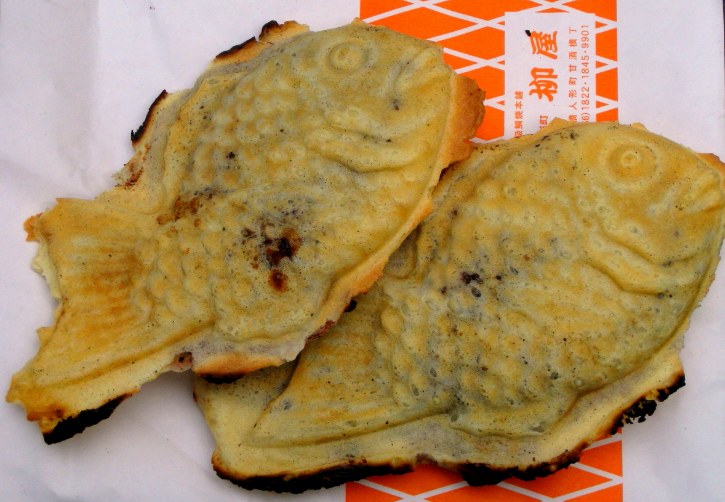
- Taiyaki at Yanagiya Taiyaki: Famous fish-shaped waffle with sweet bean paste filling.
- Ningyo-yaki at Shigemori Eishindo: Enjoy freshly baked, doll-shaped cakes filled with sweet red bean paste.
- Anmitsu at Amamidokoro Hatsune: Visit this cozy shop for anmitsu, a classic dessert with fruit, jelly, mochi, and sweet bean paste.
- Tempura at Tempura Nakayama: Taste the famous tempura rice bowls with their special sauce at this popular spot.
c. How to Get There
- By Tokyo Metro: Take the Hibiya Line to Ningyocho Station (Exit A1 or A2). Ningyocho’s main area is right outside the station exits.
- By Toei Subway: Take the Toei Asakusa Line to Ningyocho Station (Exit A1 or A2). Ningyocho’s main area is right outside the station exits.
- By Tokyo Metro (Alternate): Take the Hanzomon Line to Suitengumae Station (Exit 7 or 8). Suitengu Shrine is about a 1-minute walk away, with Ningyocho’s main streets nearby.
5. Hie Shrine
a. Overview

- What It Is: Hie Shrine is a famous Shinto shrine in Tokyo, known for its beautiful torii gates and unique monkey statues.
- History: Built in 1478, the shrine was rebuilt multiple times due to fires and war. Today’s buildings are from 1958.
- Why Visit: It’s a great place to pray for good luck and success. The monkey statues and red gates are unique and popular among visitors.
- Atmosphere: Quiet and peaceful, the shrine offers a relaxing break from the busy city with plenty of trees and seasonal flowers.
b. What to Do There
Things to See
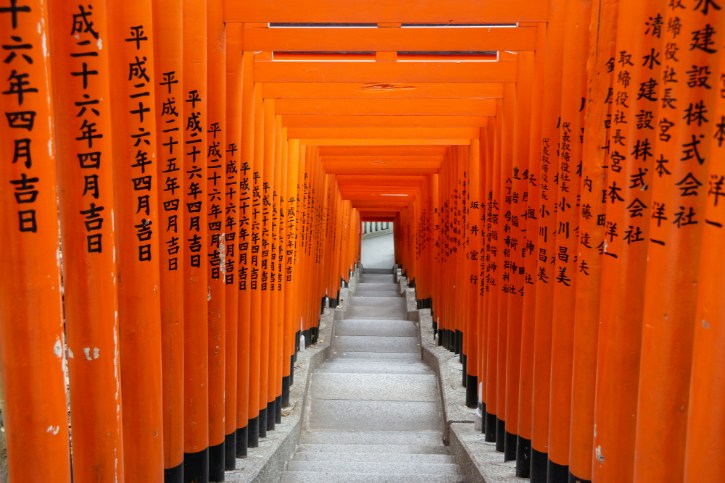
- Torii Gates: Walk through the famous tunnel of red torii gates behind the shrine. It’s perfect for photos.
- Main Hall (Honden): Visit the main hall, throw a coin, and pray using the traditional method: bow twice, clap twice, bow once.
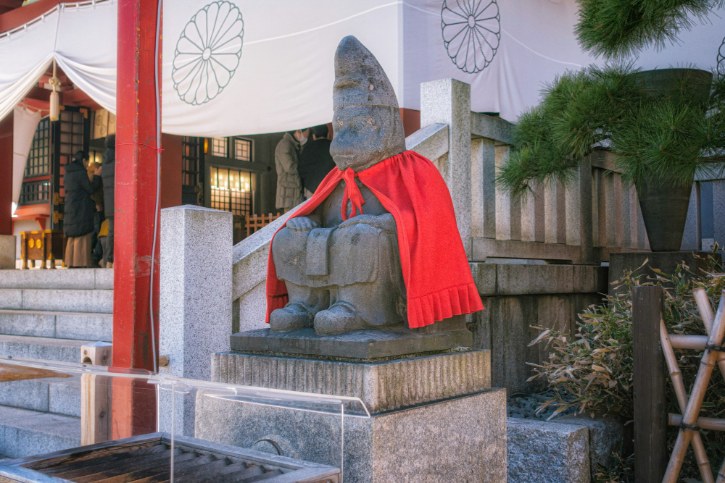
- Monkey Statues: Check out the monkey statues instead of the usual lion statues. They’re symbols of good luck, success, and family protection.
- Treasure House (Homotsuden): See historical items and samurai artifacts in the small museum. It’s usually open but closed on Tuesdays and Fridays. Entry is free.
Things to Do

- Pray for Success: Many locals pray here for success in their work, studies, and personal lives. You can too!
- Write an Ema: Write your wish on a wooden plaque (¥1000) and hang it at the shrine. It’s a nice way to leave your own prayer behind.
- Omamori Charms: Buy good luck charms (¥500–¥1000 each), especially the popular monkey-themed charms that protect and bring success.
c. How to Get There
- By Tokyo Metro:
- Ginza Line / Namboku Line: Get off at Tameike-Sannō Station (Exit 7). Hie Shrine is about a 3-minute walk from there.
- Marunouchi Line / Ginza Line: Get off at Akasaka-Mitsuke Station (Exit 11). The shrine is around a 3-minute walk.
6. Shibamata Taishakuten Sando
a. Overview

- What It Is: A traditional shopping street connecting Shibamata Station and Taishakuten Temple, filled with old-fashioned shops and food stalls.
- History: Famous from the popular Japanese movie series about Tora-san, with shops dating back over a century.
- Why Visit: Experience old-town Tokyo charm, taste local foods, and enjoy a relaxed community vibe.
- Atmosphere: Nostalgic, relaxed, and welcoming, with wooden storefronts, tasty snacks, and cheerful shopkeepers.
b. What to Do There
Explore & Visit
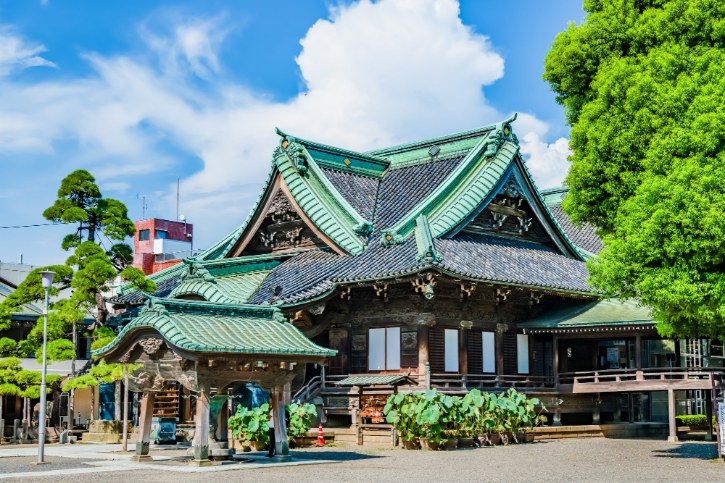
- Shibamata Taishakuten Temple: Visit this beautiful temple known for detailed wooden carvings and a peaceful garden.
- Tora-san Statues: Take photos with the iconic statues of Tora-san and his sister Sakura at Shibamata Station entrance.
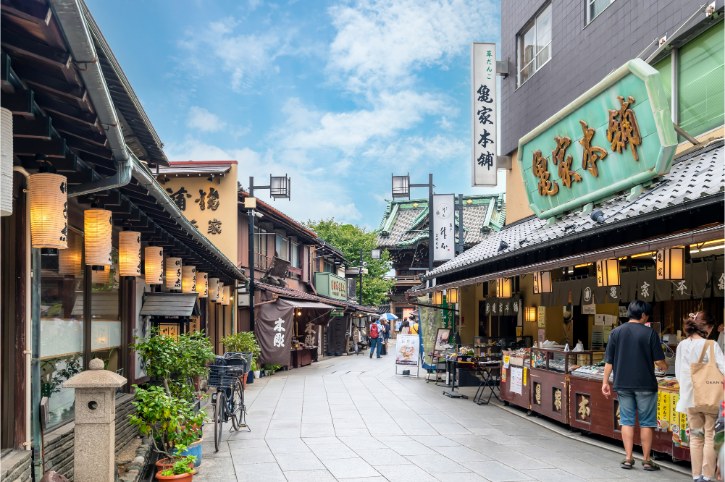
- Taishakuten Sando Street: Enjoy a leisurely walk, shop for souvenirs, and soak up the traditional atmosphere.
- Shibamata Haikara Yokocho: Visit this retro shop filled with old-style candies, nostalgic toys, and vintage arcade games.
- Yamamoto-tei: Relax and sip matcha tea at this historic residence, famous for its beautiful Japanese garden.
Foods to Try
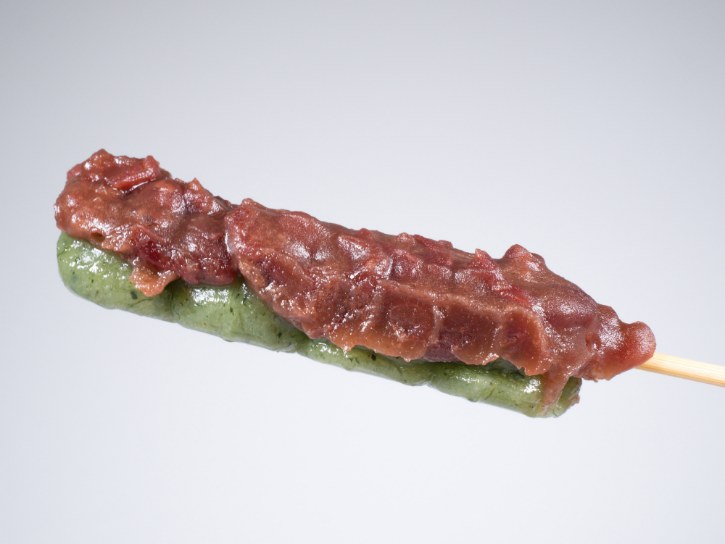
- Kusa-dango at Yoshinoya, Monzen Toraya, or Takagiya Roho: Soft, chewy green rice dumplings topped with sweet red bean paste, a must-try treat in Shibamata.
- Unajū at Kawachiya: Delicious grilled eel served over rice in a traditional setting, known as one of Tokyo’s oldest eel restaurants.
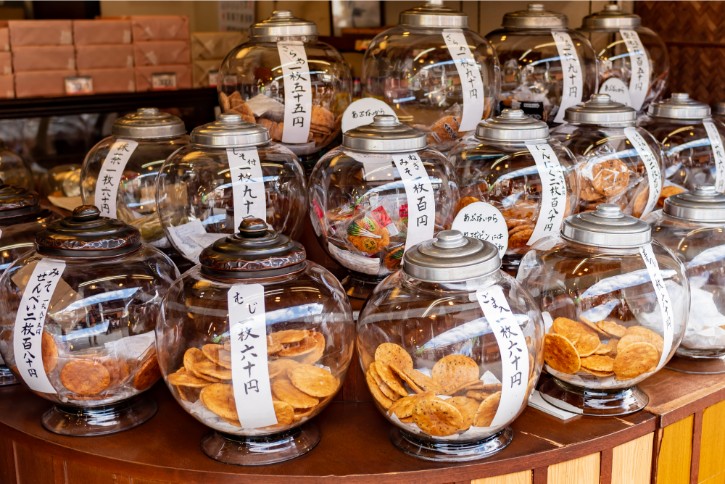
- Senbei Rice Crackers at Asanoya or Kanekoya: Crispy, freshly grilled rice crackers seasoned with soy sauce, ideal for snacking on the go.
- Kuzu Mochi at Takagiya or Kameya-Honpo: Refreshing jelly-like dessert served chilled with brown sugar syrup and roasted soybean powder.
c. How to Get There
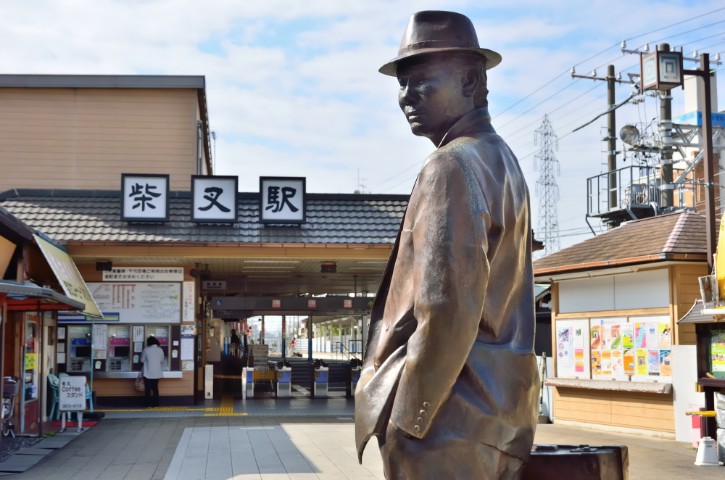
- By Keisei Train: Take the Keisei Kanamachi Line to Shibamata Station. The street is about a 2-minute walk from there.
7. Gotokuji Temple
a. Overview

- What It Is: Gotokuji Temple is a famous Buddhist temple in Tokyo, best known for its lucky cat statues called “maneki-neko”. Locals often call it the “Cat Temple”.
- History: There’s a story that a temple cat saved a samurai lord by waving him inside just before lightning struck. To thank the cat, the lord rebuilt the temple, and since then, the lucky cat became its symbol.
- Why Visit: It’s a unique spot filled with hundreds of cute lucky cats. It’s quiet, relaxing, and great for taking photos.
- Atmosphere: Calm and relaxing, located in a quiet neighborhood. The grounds are green, clean, and beautiful, especially during cherry blossoms in spring and autumn leaves season.
b. What to Do There
Explore and Enjoy
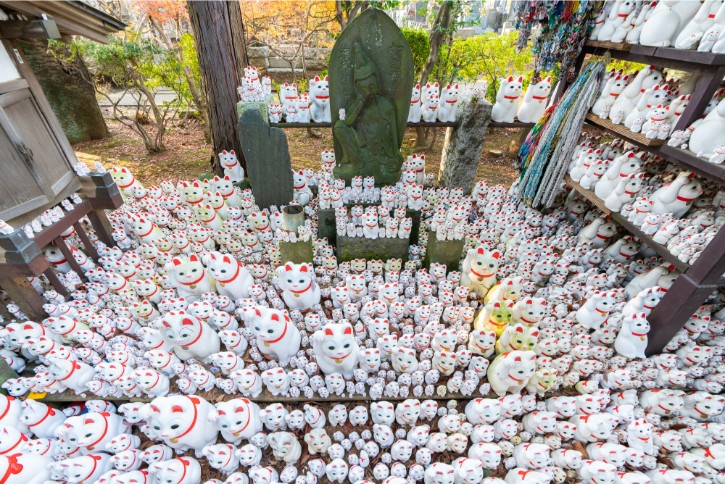
- Maneki-neko Collection: Check out the area filled with hundreds of lucky cat statues of various sizes. It’s perfect for taking fun photos.
- Maneki-neko Statue: Look for the large lucky cat statue near the main buildings. It’s a welcoming symbol and great for pictures.
- Explore Temple Grounds: Enjoy walking around the temple gardens, traditional buildings, and a small historic cemetery at the back.
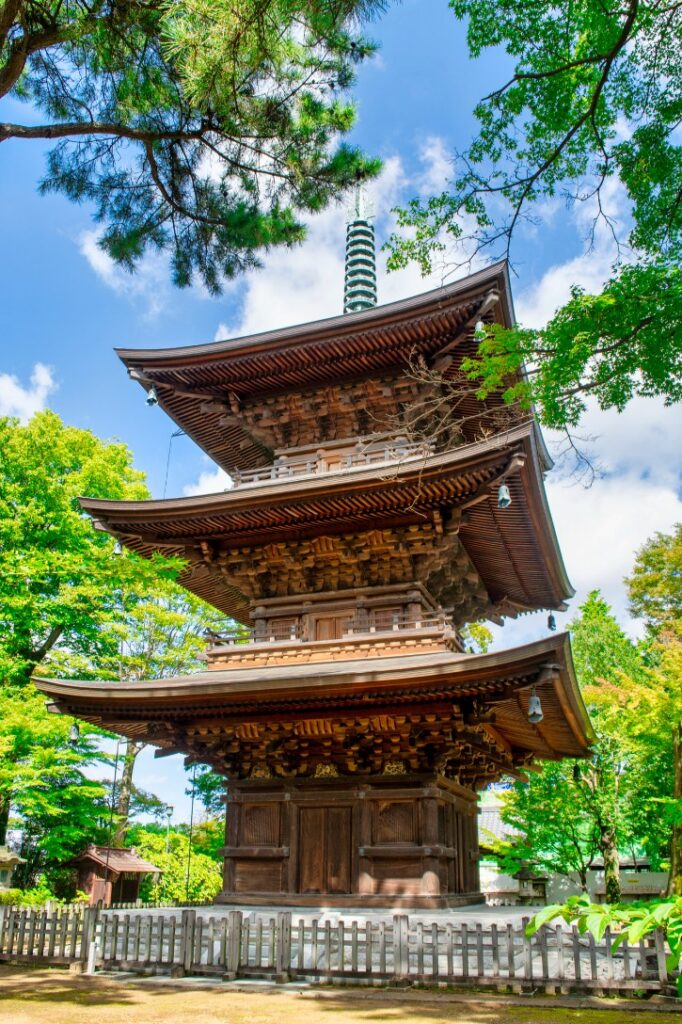
- Three-Story Pagoda: Admire the beautiful wooden pagoda. Try to spot a hidden carving of a small lucky cat on it!
Temple Experiences
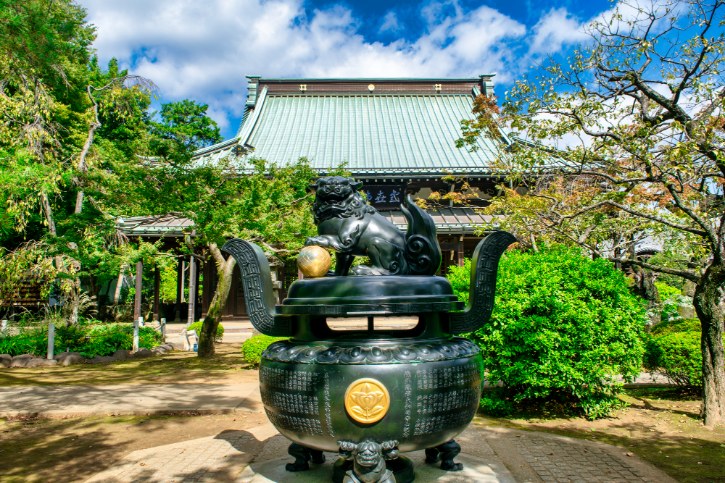
- Light Incense and Pray: Join in by lighting incense at the burner. Toss a coin, ring the bell, and quietly make a wish or prayer.
- Buy a Lucky Cat: Stop by the temple shop to buy a small lucky cat statue. You can take it home as a souvenir or leave it at the temple with your wish.
c. How to Get There

- By Tokyu Setagaya Train: Take the Tokyu Setagaya Line to Miyanosaka Station (Sangen-jaya Exit). Gotokuji Temple is around a 5-minute walk away. Occasionally, you might catch the special Kofuku-no-Manekineko Densha (Lucky Cat Train) that runs on this line. Check the Lucky Cat Train schedule here.
- By Odakyu Train: Take the Odakyu Line to Gotokuji Station. The temple is about a 10-minute walk from there.
8. Koenji Junjo Shotengai
a. Overview
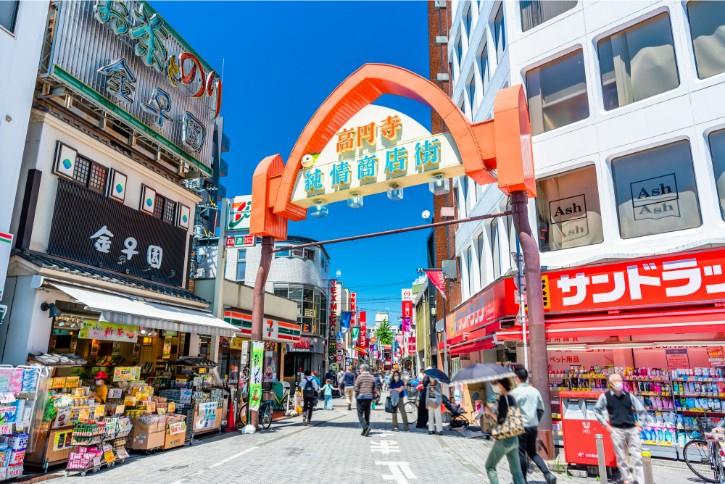
- What It Is: A popular shopping street near Koenji Station in Tokyo, famous for vintage clothing, small cafes, and local atmosphere.
- History: Originally named Koenji Ginza Shotengai, renamed in the late 1980s after a popular novel called “Koenji Junjo Shotengai”.
- Why Visit: Great for casual exploring, unique vintage shopping, and experiencing a friendly local neighborhood.
- Atmosphere: Relaxed, cozy feel with retro-style shops, small eateries, and welcoming local vibe.
b. What to Do There
Shopping & Exploring
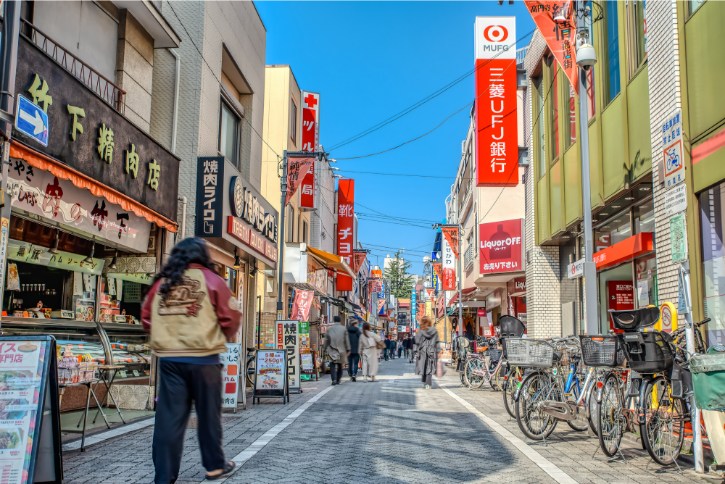
- Vintage Clothing Shopping: Browse affordable and stylish secondhand clothes at shops like The Gate, popular for retro fashion.
- Secondhand Goods: Hunt for vintage electronics, books, records, and unique collectibles, especially at shops like Hard Off.
- Take Photos: Capture memorable pictures under the Junjo Shotengai entrance arch, colorful shopfronts, street art, and lantern-lit evenings.
- Street Performances: Enjoy street shows during special events, especially the Bikkuri Street Performer Festival in April and Awa Odori dance festival in late August.
Food & Dining
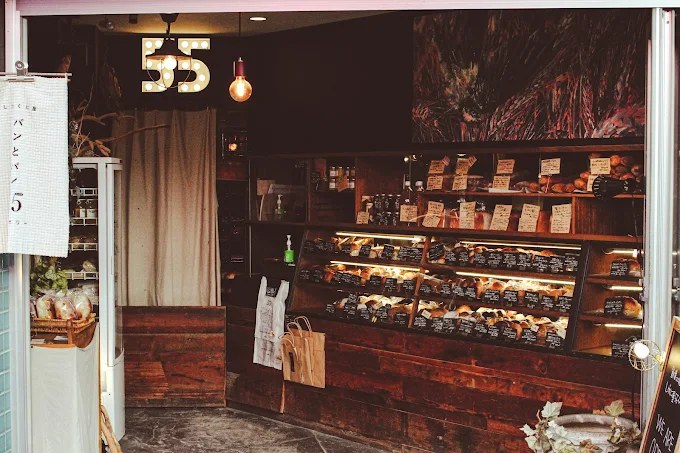
- Shigekuniya 55 Bakery: A small bakery known for fluffy bread, tasty bagels, and banana bread.
- Tensuke: Famous local spot known for egg tempura, crispy on the outside with a soft yolk inside.
c. How to Get There
- By JR Train: Take the JR Chuo-Sobu Line (Local)/ Chuo Line to Koenji Station (North Exit). Koenji Junjo Shotengai is directly across the street, about a 1-minute walk.
9. Nakano Sun Mall Shopping Street
a. Overview
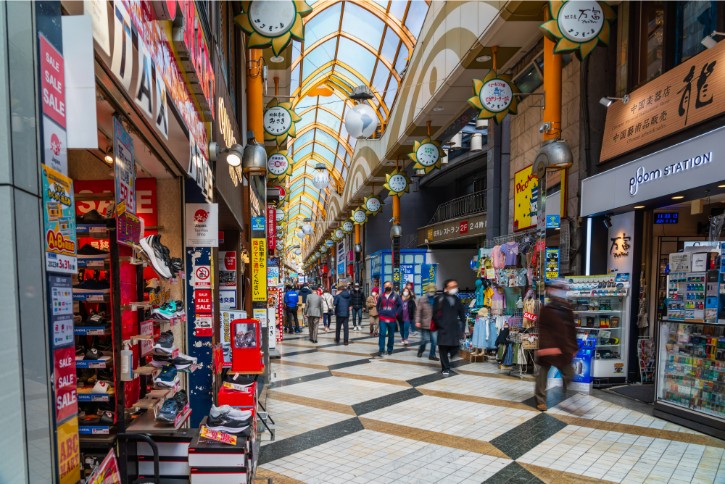
- What It Is: A popular covered shopping street in Nakano, Tokyo, with various shops, cafés, and restaurants. It connects directly to Nakano Broadway.
- History: Opened in the 1950s after the war and upgraded around 1966. Many shops here are run by local families for generations.
- Why Visit: Perfect for shopping, eating local snacks, and exploring anime and manga culture. It’s covered, making it a comfortable place even when it rains.
- Atmosphere: Lively, friendly, and busy. You’ll find a blend of modern and old-fashioned shops, giving a nostalgic feel.
b. What to Do There
Shopping & Anime
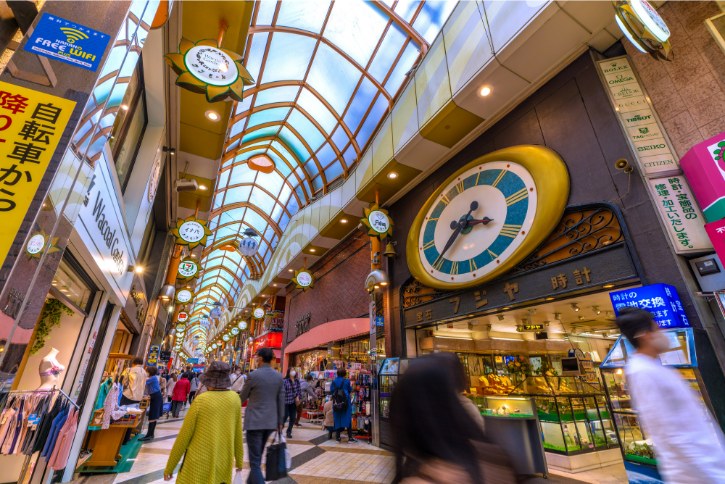
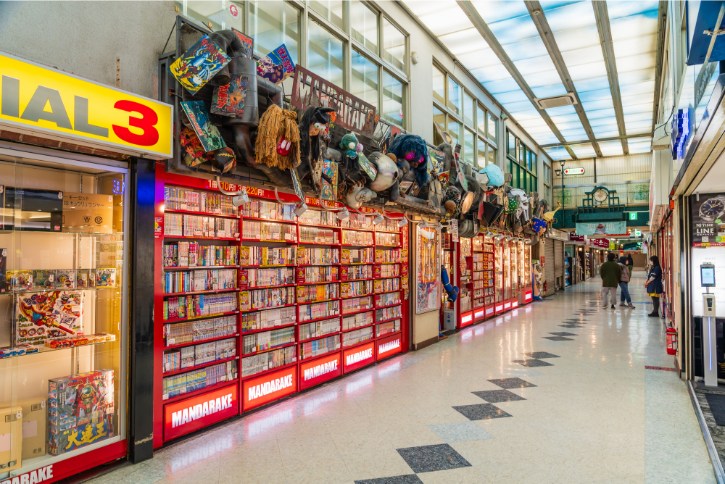
- Mandarake: Famous for anime and manga collectibles. Spread across multiple shops inside Nakano Broadway, it’s a paradise for fans.
- Fujiya Camera: Popular store selling new and used cameras. Ideal if you love photography, and it offers tax-free shopping for tourists.
- Tsujiya: Traditional shoe shop opened in 1926. They sell classic Japanese shoes and umbrellas, good for practical souvenirs.
- Taco Ché: Small bookstore specializing in indie manga, art books, and comics. Quiet and relaxed compared to larger stores.
- Robot Robot: Several small shops filled with anime figures, toys, and collectibles. Fun for browsing even if you don’t buy.
- Explore Nakano Broadway: The arcade leads right into Nakano Broadway, famous for anime, manga, vintage toys, and collectibles. Worth spending time wandering around.
Eating & Snacking
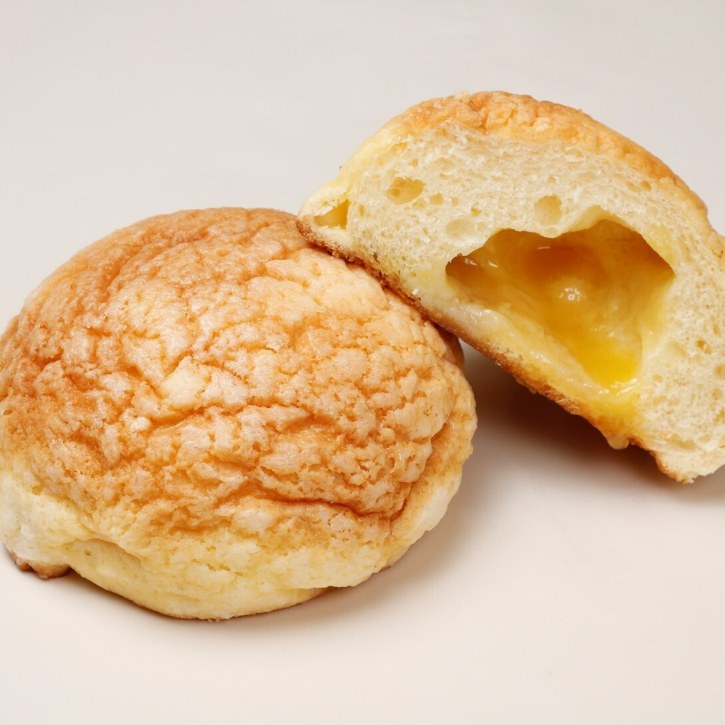
- Bonjour Bon: Bakery famous for maple melon pan (sweet bread). Good place for breakfast or a quick snack.
- Umeya: Cozy café famous for delicious inari-zushi (sushi rice wrapped in sweet tofu skin) and cream anmitsu, a traditional dessert.
- Daily Chico: Known for huge soft-serve ice cream cones with eight different flavors stacked high. Great for photos but eat quickly before it melts!
- Oyakidokoro Refutei: Popular snack stall near Nakano Station selling fresh imagawayaki, warm pancake-like snacks filled with sweet beans, custard, and more.
- Gansozushi: Affordable conveyor-belt sushi restaurant. Great for a quick meal, especially if dining alone.
c. How to Get There
- By JR Train: Take the JR Chuo-Sobu Line (Local) or Chuo Line to Nakano Station. From the North Exit, Nakano Sun Mall is directly across the street, about a 1-minute walk.
- By Tokyo Metro: Take the Tozai Line to Nakano Station. Exit via the North Exit, and Nakano Sun Mall is right across the street, roughly a 1-minute walk.
10. Naritasan Omotesando Street (Near Narita Airport)
a. Overview
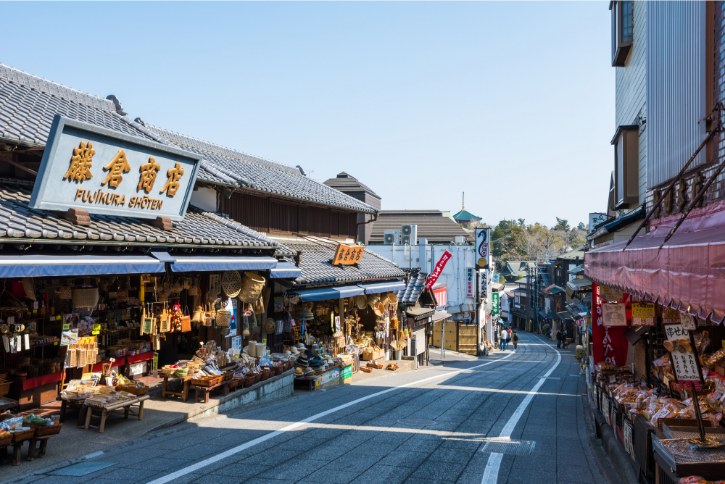
- What It Is: Naritasan Omotesando Street is an 800-meter shopping street in Narita City, lined with traditional shops and eateries leading to Naritasan Shinshoji Temple.
- History: The street has existed for over 300 years, developed to serve pilgrims visiting the historic temple built in 940 AD.
- Why Visit: It’s a great place to experience Japan’s traditional culture conveniently near Tokyo and Narita Airport. You can taste local food, explore charming buildings, and visit a famous temple.
- Atmosphere: Friendly and relaxed, with old-style wooden shops, inviting shopkeepers, and a calm, nostalgic feel.
b. What to Do There
Activities & Attractions
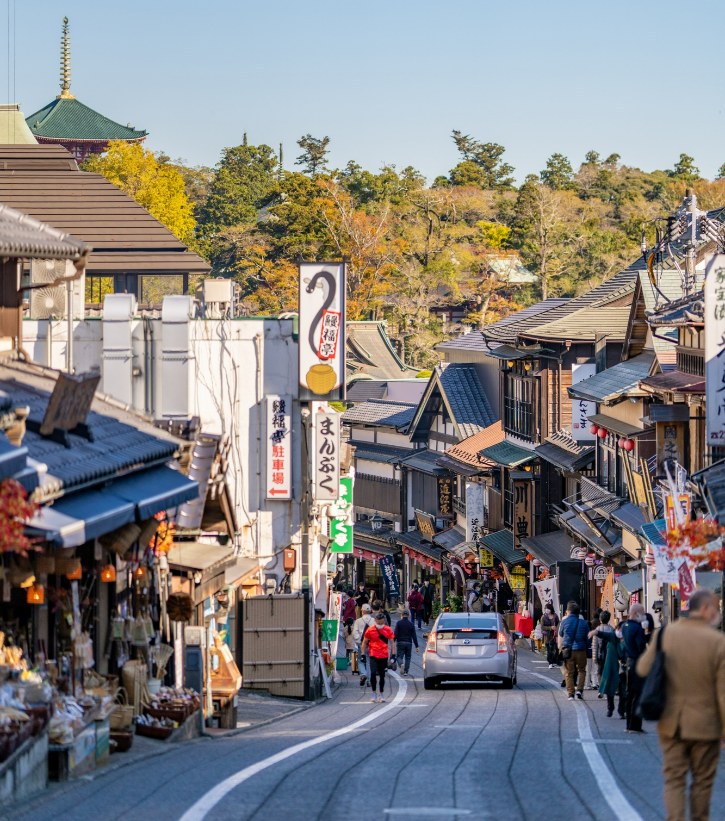
- Souvenir Shopping: Buy local souvenirs like protective charms from the temple, traditional pottery, green tea, peanut sweets, rice crackers, sake, or eel-themed snacks.
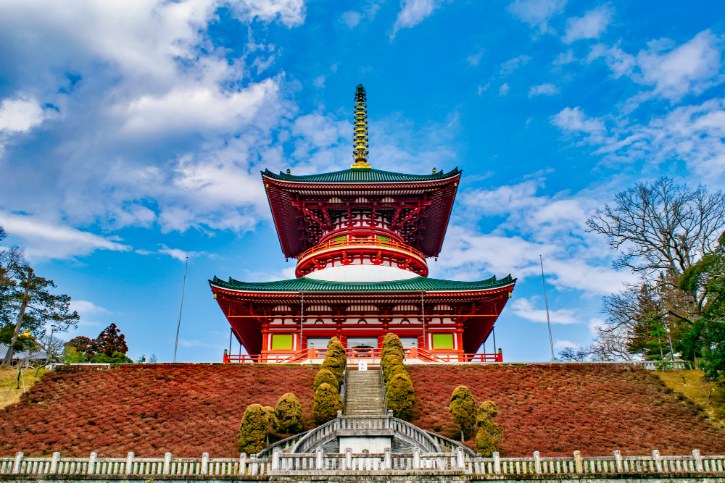
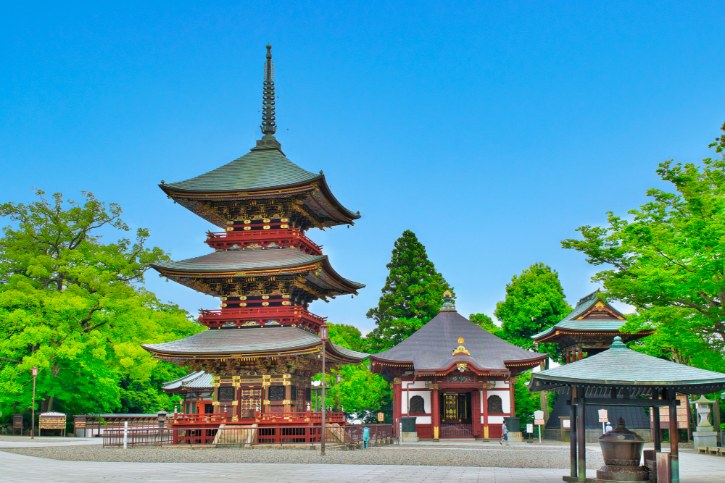
- Naritasan Shinshoji Temple: A famous temple at the street’s end, over 1,000 years old. You can see historic buildings, watch ceremonies, and stroll peaceful gardens.
Local Foods to Try
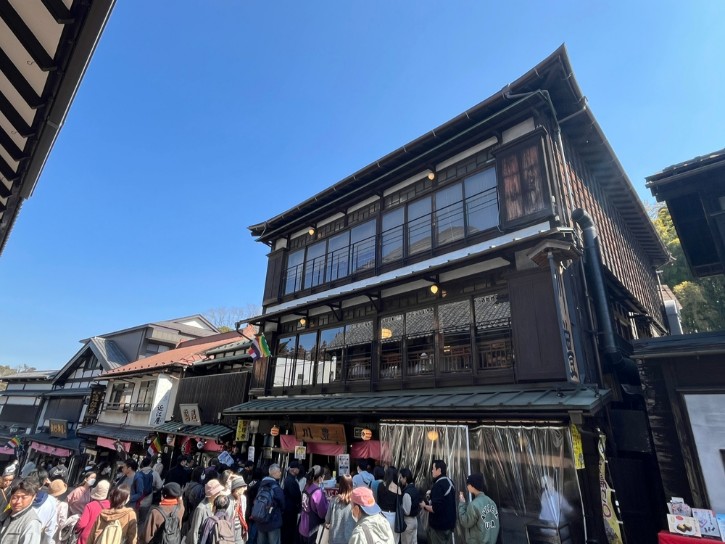
- Kawatoyo: This popular restaurant serves delicious grilled eel cooked fresh at the shopfront. It’s famous among locals and visitors, perfect for tasting Narita’s specialty dish.
- Street Foods: Try local snacks like rice crackers (senbei), sweet dumplings (dango), roasted sweet potatoes (yaki imo), and sweet bean jelly (yokan) as you walk along the street.
- Hashira Deli & Cafe: This cozy café serves tasty pastries, coffee, and matcha latte with cute latte art. It’s a great place to relax and recharge.
- Kintoki Amataro-yaki: This small shop is popular for freshly made red bean cakes, prepared daily with a traditional recipe.
- Nagomi Yoneya: Visit this famous sweet shop for traditional peanut snacks and delicious sweet bean jelly. These are perfect local treats to try.
c. How to Get There
- By JR Train: Take the Narita Express to Narita Station (East Exit). Naritasan Omotesando Street starts just outside the station.
- By Keisei Train: Take the Keisei Main Line to Keisei Narita Station (West Exit). Naritasan Omotesando Street is directly outside the station.
Additional Pick: Ueno Toshogu Shrine
a. Overview
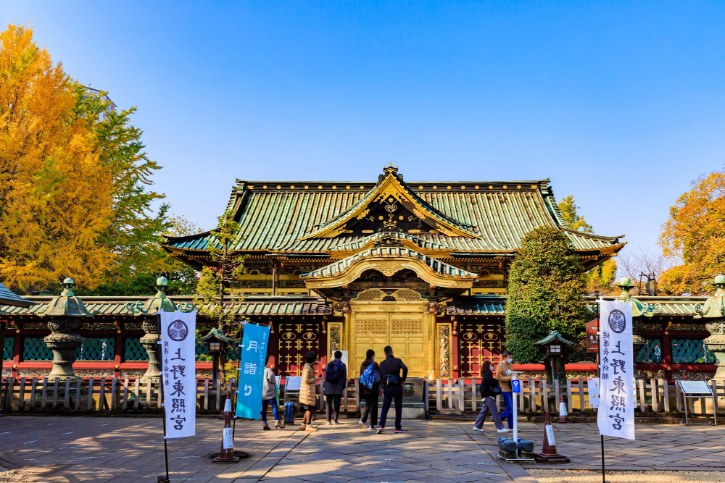
- What It Is: A famous shrine in Ueno Park, dedicated to Tokugawa Ieyasu, the leader who founded Japan’s Edo period.
- History: Established in 1627, rebuilt in 1651. Remarkably, it has stayed intact through earthquakes, fires, and wars.
- Why Visit: Visit for authentic Edo-era buildings with beautiful gold decorations and detailed carvings. It’s a rare piece of Tokyo’s history.
- Atmosphere: Calm and quiet, giving you a peaceful break from the busy city. Perfect place to slow down and enjoy the historic surroundings.
b. What to Do There
Explore the Shrine
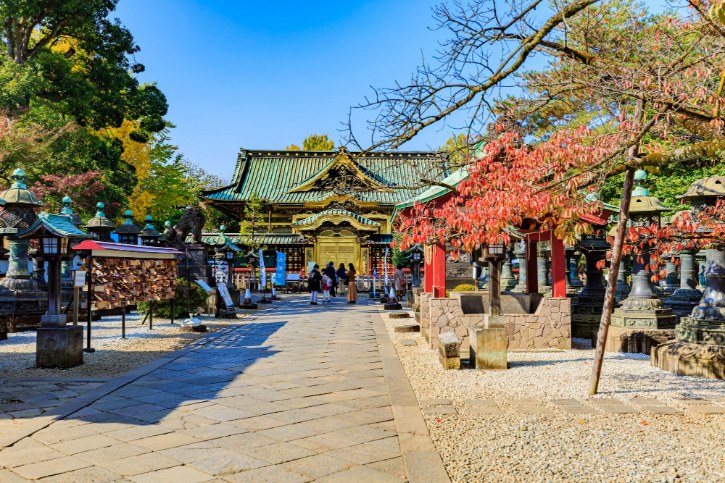
- Lantern Path: Walk along a path lined with hundreds of stone and bronze lanterns donated centuries ago. Don’t miss the huge lantern known as the “Monster Lantern”.
- Karamon Gate: See the beautifully decorated golden gate with detailed carvings of dragons and mythical creatures. Don’t miss the famous dragon carvings.
- Main Hall (Honden): Admire the Golden Hall covered in gold leaf and detailed carvings. You can’t enter inside, but for ¥500, you can see it closely from the inner courtyard.
- Sukibei Wall: Check out the decorative see-through wall around the shrine featuring detailed carvings of animals and mythical creatures.

- Spot the Five-Story Pagoda: From the shrine grounds, see the historic five-story pagoda that now belongs to Ueno Zoo. It’s one of Tokyo’s oldest and makes a great photo backdrop.
Enjoy the Garden & Local Customs
- Peony Garden: Visit the lovely garden filled with colorful peonies blooming in winter and spring. Entry is about ¥700.
- Pray for Luck: Locals often come here to pray for success, passing exams, good health, and a long life. You can buy wooden plaques (ema) to write your wishes.
c. How to Get There
- By JR Train: Take the JR Yamanote Line or Keihin-Tohoku Line to Ueno Station (Park Exit). The shrine is about a 10-minute walk through Ueno Park from there.
- By Tokyo Metro: Take the Ginza Line or Hibiya Line to Ueno Station. The shrine is around a 10-minute walk through Ueno Park.
- By Keisei Train: Take the Keisei Line or Skyliner to Keisei Ueno Station. The shrine is roughly a 10-minute walk through Ueno Park.
Related Posts
Photo Credit:
Photos by PIXTA

